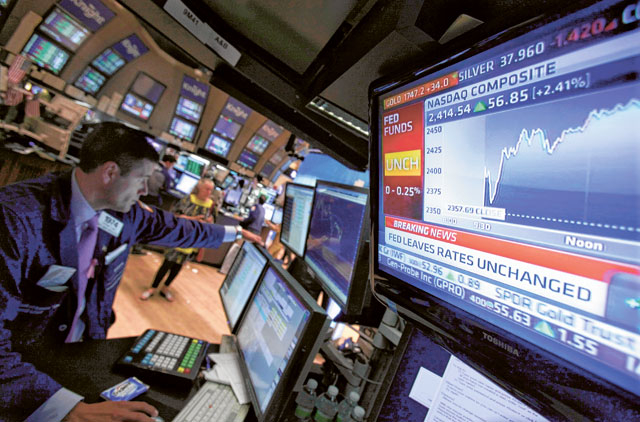Dubai: Global markets, which witnessed a sell off last week, may go to the extent of slowing global growth, analysts said, even as they sniff for investment opportunities.
Global markets fell between 1-4 per cent last week, with the Dow Jones Industrial Average falling 500 points. Gold, however, recovered more than 10 per cent from its recent low on safe haven buying.
“The greatest near-term worry is that the fallout seen in the financial markets has a negative and reinforcing impact on global growth. The legacy of the turmoil in emerging markets is of course most likely to be lower growth in those economies,” said Gary Dugan, chief investment officer, at National Bank of Abu Dhabi.
In many of the emerging markets, the cost of borrowing has risen, and the falls in their currencies have increased input costs in local terms.
“For sure the fall in their currencies will have made their exports cheaper, although concerns about the funding and servicing of debt will add further angst,” Dugan said.
On Friday, Chinese factory data pointed to a slowdown to levels last seen in 2009 and added to investors’ fears about the country’s economy since Beijing devalued its currency last week. This led to a sell-off in Chinese markets with the benchmark Shanghai Composite Index falling 15 per cent in the past one month.
“Investors should expect a managed slowdown in Chinese growth. The moderation of Chinese growth is part of the reason we are underweight on emerging market equities,” said Mark Haefele, global chief investment officer wealth management at UBS.
Fed hike?
The next big question in front of traders is will the US Federal Reserve hike rates under current circumstances.
The Fed is arguing that the economic data is strong enough for a rate hike, but that low inflation levels mean they do not need to rush a decision.
“Over the next year, we expect GDP growth to remain in the 2—3 per cent range, and core inflation to increase very gradually into the 1.5—2 per cent range,” said UBS’ Haefele.
“We think this would be consistent with the Fed raising rates to around 1 per cent by the end of 2016, as the market is pricing in,” he said, adding “We think September is the most likely time for ‘lift-off’. However, we recognise that the Fed will err on the side of caution. If in doubt, the Fed is likely to be prepared to wait a little longer.”
However, with the current inertia and currency wars, some analysts pointed out that US Federal Reserve may decide to postpone rates, but the pace of rate increase could be stronger if strong set of data comes out of the US.
Bargain buyers:
“Equities will witness some volatility going ahead, but some technical rebound is not ruled out in the UAE markets. I guess some buyers will come back in good names sold off in past weeks,” said Sebastien Henin, head of asset management at The National Investor.
Buying opportunities also exist in European equities, which most of the investment houses are overweight on due to accommodative monetary policy.
Saxo Bank’s Head of Equity Strategy Peter Garnry agreed. “One should not panic and we see some aggressive buying coming in at levels at around 10,000-10,400 on German Dax, and we are considering to some trades. We think selling would stop here as fundamentally things have not changed in the past two years,” Garnry said, adding “we see stability coming back.”
The German DAX index closed at the day’s low of 10,124.52, down 2.95 per cent.













